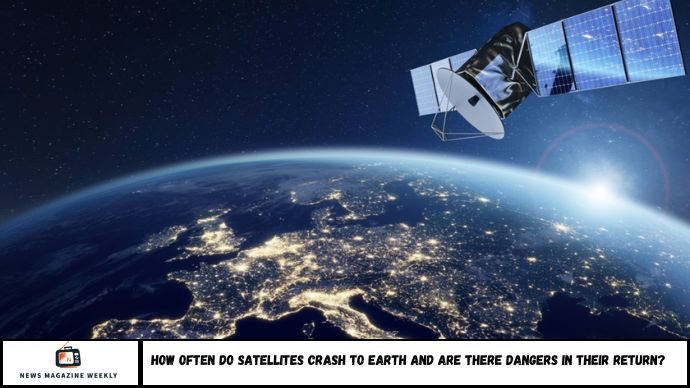How often do satellites crash back to Earth? It’s a question that blends curiosity with concern, especially as space becomes more crowded. While thousands of satellites orbit the planet, only a small percentage ever re-enter Earth’s atmosphere—and fewer still pose danger. This article explains the frequency of satellite crashes, potential risks, how re-entries are managed, and what you should really worry about.
Should We Be Worried About Falling Satellites?
In March 2022, a 3-ton piece of space debris crashed into the Moon—intentionally or not, it raised eyebrows. Closer to home, you may wonder: Do satellites fall back to Earth often, and are we in danger? With thousands of satellites in orbit and more launching each year, the concern is growing.
In this article, we’ll cover:
- How frequently satellites re-enter Earth’s atmosphere
- What happens during re-entry
- The risks involved for people and property
- How agencies track and manage satellite returns
- The future of space debris and safety strategies
Let’s break down this complex issue with clear facts and expert-backed data.
What Happens to Satellites After Their Mission Ends?
When satellites reach the end of their operational life, three things can happen:
- They remain in orbit as space junk (if in high orbit)
- They burn up during atmospheric re-entry
- They’re guided to controlled re-entry zones (e.g., “spacecraft cemeteries” like the South Pacific Ocean)
Key Point:
Most satellites either burn up completely in Earth’s atmosphere or are intentionally de-orbited into safe zones. The risk to life is extremely low.
How Often Do Satellites Crash Back to Earth?
By the Numbers:
- There are currently over 9,000 operational satellites in orbit (as of 2025).
- About 100 to 200 objects re-enter Earth’s atmosphere each year, according to NASA and the European Space Agency (ESA).
- Only 20% of those are satellites—the rest are spent rocket stages or debris.
- Uncontrolled re-entries happen less than a dozen times annually.
Important Fact:
No one has ever been killed by falling satellite debris. The odds of injury are estimated at less than 1 in 1 trillion, according to NASA.
Are Falling Satellites Dangerous?
In theory, yes. In practice, almost never.
Here’s Why You’re Safe:
- 90–95% of a satellite burns up during re-entry due to extreme heat and pressure.
- Most surviving fragments land in oceans or uninhabited areas.
- Agencies like NASA, ESA, and SpaceX monitor re-entries and notify governments in advance.
The most famous case of debris reaching Earth was Skylab in 1979, which scattered parts over Western Australia. No injuries occurred, though a fine was humorously issued for littering.
How Are Satellites Tracked and Controlled?
International space agencies use advanced tracking systems like:
- U.S. Space Surveillance Network (SSN)
- ESA’s Space Debris Office
- NORAD’s radar systems
They can calculate re-entry paths with high precision. In many cases, satellites are deliberately de-orbited in a controlled manner to minimize risk.
The Growing Concern: What About the Future?
With mega-constellations like Starlink (SpaceX) and Project Kuiper (Amazon) launching thousands of satellites, orbital traffic is increasing. While this improves global communication, it also raises the risks of:
- Collision-induced debris
- Uncontrolled re-entries
- Pollution in low-Earth orbit (LEO)
Experts call for stricter regulations and better de-orbit technology to reduce space junk.
Conclusion
So, how often do satellites crash back to Earth? Fairly often—but almost always safely. With precise tracking, controlled burns, and international monitoring, the risks to people on Earth are minimal.
While the idea of falling satellites may sound dramatic, the reality is far less scary. But as space becomes more crowded, continued innovation in space traffic management and debris mitigation will be crucial.
FAQs
1. How often do satellites fall to Earth?
Roughly 20–40 satellites re-enter Earth’s atmosphere each year.
2. Is it dangerous when satellites fall?
Almost never—most burn up or land in safe zones.
3. Can satellite parts hit someone?
Extremely unlikely—odds are less than 1 in 1 trillion.
4. Who monitors falling satellites?
Agencies like NASA, ESA, and NORAD track satellite re-entries.
5. What happens to old satellites?
They’re either left in orbit, burned up, or safely de-orbited.
6. Has anyone ever been hit by satellite debris?
No deaths have been reported. One woman was lightly struck in 1997 with no injury.

